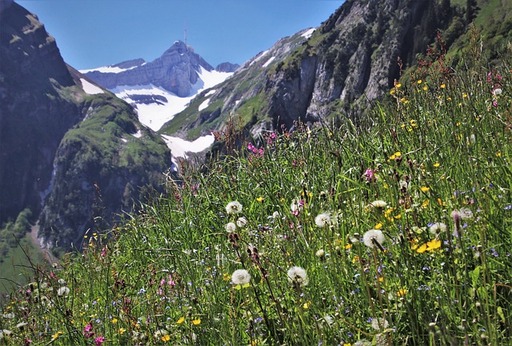
The scenic appeal of mountainous environments frequently masks the particular difficulties caused by water-related problems. In these high areas, the combination of rough terrain and precipitation can result in considerable risks of water damage. From possible landslides to soil erosion, it is important for locals and property owners to recognize and deal with these difficulties.
This extensive guide will go over useful tips and specific procedures for preventing water damage in mountainous areas. Through an examination of topographical details, precipitation patterns, and the unique vulnerabilities of higher elevations, we hope to provide you with the knowledge required to protect your property from the risks of water damage in these stunning settings.
See also our post on A Comprehensive Guide on Dealing with Water Damage in Historic Buildings
Understanding Mountainous Terrain
Evaluating Slope Gradients
Assess the slope gradients around your property. Steeper slopes are more prone to water runoff, increasing the risk of soil erosion and potential damage to structures.
Identifying Natural Drainage Paths
Recognize natural drainage paths on the mountain. Understanding how water naturally flows helps in implementing effective preventive measures, directing water away from vulnerable areas.
Mapping Water Flow Patterns
Create a map of water flow patterns during rainfall or snowmelt. This visual aid can guide decisions on landscaping and infrastructure development to mitigate potential water damage.
Considering Altitude Influences
Take into account the altitude of your property. Higher altitudes may experience different precipitation patterns, including heavier snowfall, which requires specific considerations for water damage prevention.
Analyzing Soil Composition
Understand the soil composition of mountainous terrain. Different soil types absorb and retain water differently, influencing the risk of landslides or erosion during heavy precipitation.
Landscaping for Water Resilience
Implementing Terracing Techniques
Consider terracing your land to create flat areas on slopes. Terracing helps slow down water runoff, reducing the risk of soil erosion and landslides during heavy rainfall.
Planting Native Vegetation
Opt for native vegetation in landscaping. Native plants are adapted to local conditions and can assist in stabilizing soil, preventing erosion, and enhancing water absorption.
Creating Retention Basins
Design retention basins to capture excess water during heavy rainfall. These basins act as temporary storage, preventing immediate runoff and minimizing the risk of flooding.
Utilizing Rain Gardens
Incorporate rain gardens into your landscaping. These specially designed areas with absorbent plants help manage water runoff, promoting natural filtration and reducing erosion.
Installing Erosion Control Measures
Implement erosion control measures such as silt fences, mulching, and geotextiles to stabilize soil and prevent erosion, particularly on vulnerable slopes.
Building Resilient Structures
Proper Foundation Drainage
Ensure proper drainage around building foundations. Implementing effective drainage systems prevents water from accumulating around structures and reduces the risk of water infiltration.
Waterproofing Foundations
Apply waterproofing treatments to foundations. This additional layer of protection helps repel water and safeguards the structural integrity of buildings against potential water damage.
Elevating Structures
Consider elevating structures in flood-prone areas. Raising buildings above potential flood levels reduces the risk of water entering and causing damage during heavy rainfall.
Installing Gutters and Downspouts
Equip buildings with gutters and downspouts. These components direct water away from the structure, preventing water accumulation and potential damage to walls and foundations.
Using Permeable Materials
Opt for permeable materials in construction. Porous surfaces, such as permeable pavements, allow water to be absorbed rather than creating runoff, minimizing the risk of erosion.
See also our post on How to Save Valuable Artwork from Water Damage
Managing Water Runoff Effectively
Redirecting Water Flow
Implement measures to redirect water flow away from vulnerable areas. Contouring the land or using barriers can guide water away from structures and reduce the risk of erosion.
Constructing Swales
Build swales or depressions to capture and redirect water. Swales act as natural channels, slowing down water runoff and preventing it from causing damage.
Installing Drainage Ditches
Create drainage ditches strategically. These ditches help channel water away from critical areas, reducing the risk of soil erosion and potential landslides.
Ensuring Proper Road Drainage
Maintain proper drainage on roads. Well-designed road drainage systems prevent water from accumulating, reducing the risk of landslides and road damage.
Implementing Culverts and Bridges
Incorporate culverts and bridges where needed. These structures facilitate water flow, preventing blockages and minimizing the risk of floods and structural damage.
Monitoring and Early Warning Systems
Utilizing Weather Monitoring
Make use of weather monitoring systems specific to mountainous regions. Understanding upcoming weather patterns helps in implementing timely preventive measures.
Installing Rain Gauges
Install rain gauges to measure precipitation levels. This data is crucial for assessing potential risks and adapting preventive strategies based on the amount of rainfall.
Implementing Early Warning Systems
Establish early warning systems for potential landslides or flash floods. Timely alerts enable residents and property owners to take preventive actions and evacuate if necessary.
Regular Site Inspections
Conduct regular site inspections, especially after heavy precipitation events. Identifying changes in the landscape allows for prompt intervention and the prevention of water damage.
Engaging with Local Authorities
Collaborate with local authorities for information and support. Being informed about potential risks and participating in community initiatives enhances overall resilience.
Snowmelt Management Strategies
Understanding Snow Accumulation
Be aware of snow accumulation patterns. Melting snow can contribute to significant water runoff, and understanding these patterns is essential for preventing water damage.
Clearing Snow from Critical Areas
Regularly clear snow from critical areas. Clearing pathways for snowmelt prevents the buildup of water that could lead to flooding or structural damage.
Implementing Snow Fences
Consider using snow fences strategically. These barriers help control the distribution of snow, preventing excessive accumulation in specific areas.
Creating Snow Storage Areas
Designate specific areas for snow storage. Controlled snowmelt in designated areas reduces the risk of sudden water runoff and potential damage.
Adapting Construction Techniques
Incorporate construction techniques that account for snowmelt. Elevated foundations, proper insulation, and strategic placement of structures help prevent water damage associated with snowmelt.
Collaboration and Community Resilience
Participating in Community Initiatives
Engage in community initiatives for water management. Collaborative efforts strengthen overall resilience, fostering a collective approach to preventing water damage in mountainous regions.
Sharing Knowledge and Experiences
Share knowledge and experiences within the community. Building a collective understanding of water-related challenges promotes informed decision-making and effective preventive measures.
Developing Emergency Plans
Work with the community to develop emergency plans. Having well-defined protocols for potential water-related emergencies enhances preparedness and response capabilities.
Creating Community Watch Programs
Establish community watch programs. Active community involvement in monitoring and addressing potential risks contributes to overall resilience against water damage.
Advocating for Sustainable Practices
Advocate for sustainable practices in the community. Preserving the natural landscape and adhering to environmentally conscious habits reduce the overall risk of water-related challenges.
See also our post on Tips for Preventing Water Damage in a Coastal Resort
Conclusion
In the highlands, the allure of the scenery frequently masks the intricate problems caused by water-related hazards. This extensive manual has attempted to clarify these complexities by providing useful tactics and comprehensive instructions for avoiding water damage in high places.
You can safely navigate the heights by incorporating these insights into your approach, knowing that your mountainous home is resilient and safe from the forces of water. From comprehending the terrain dynamics to putting resilient construction and community-wide initiatives into action, each section plays a crucial role in fortifying properties against the risks associated with water in mountainous regions.






